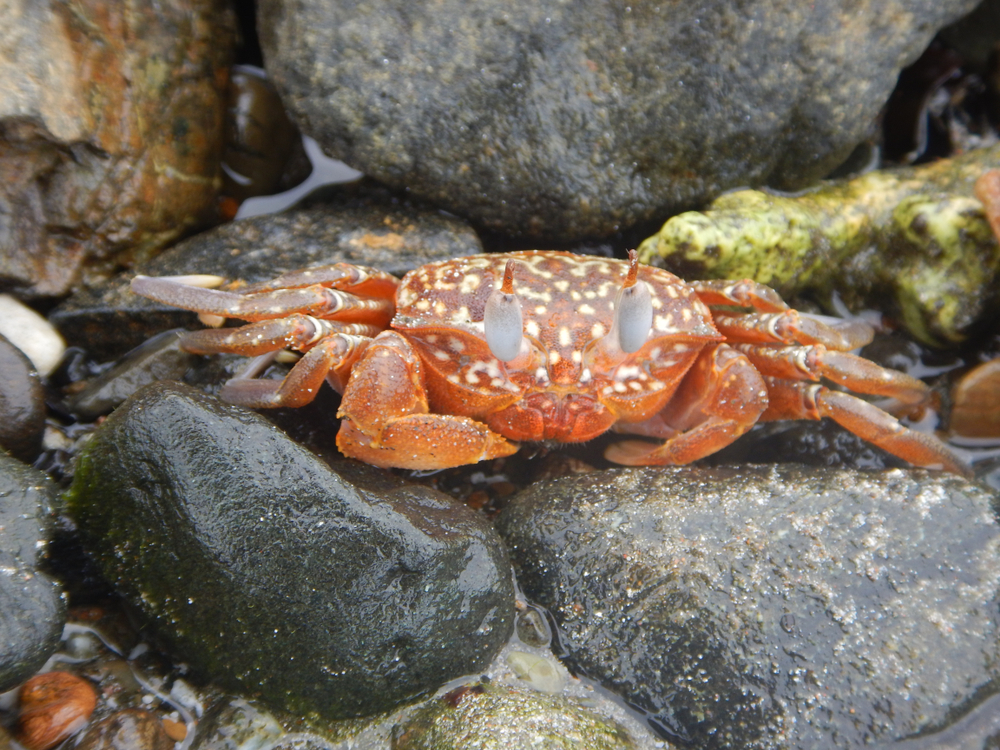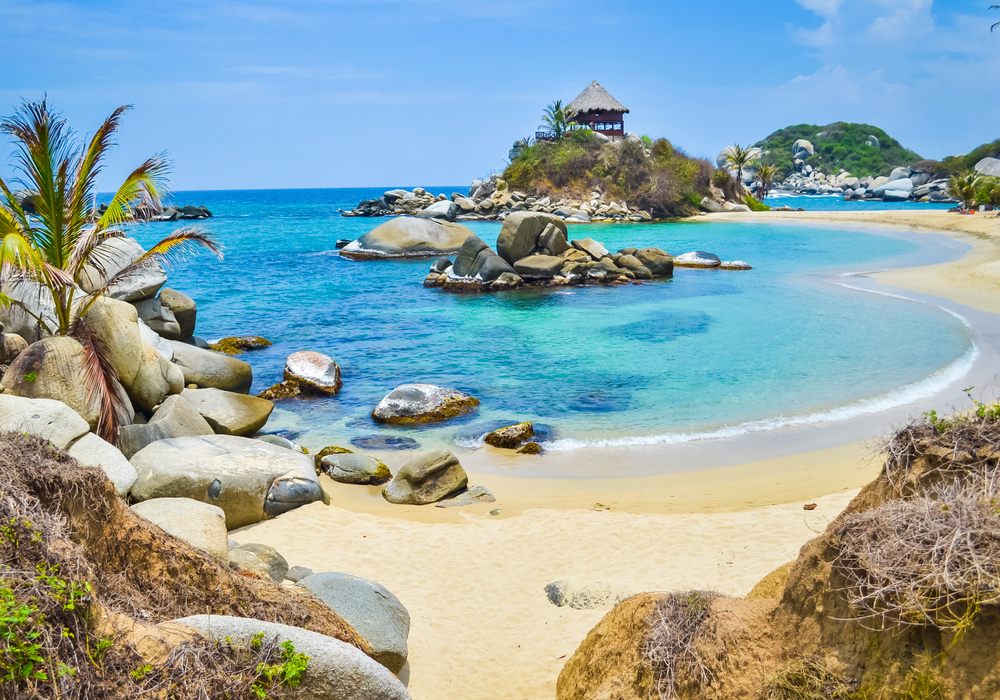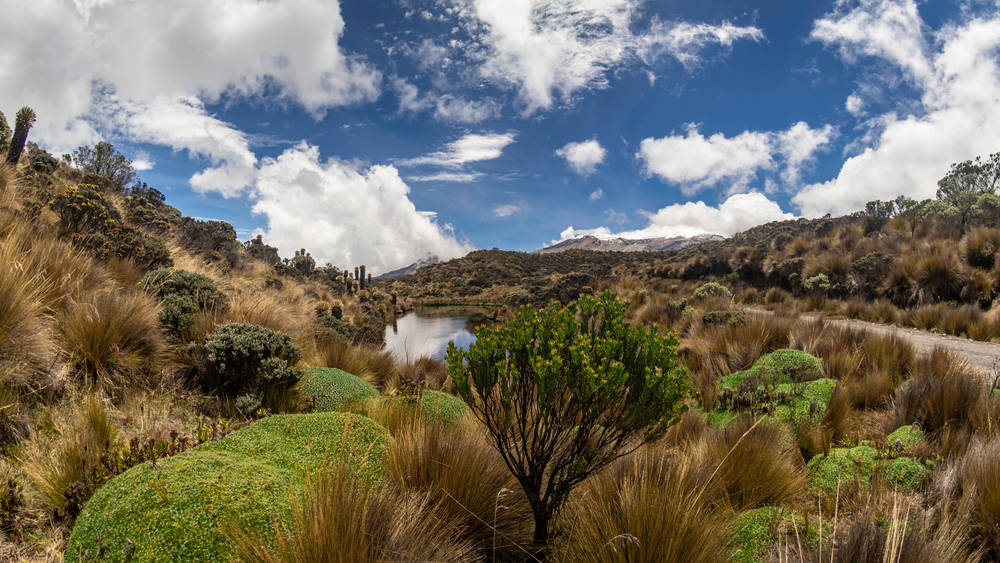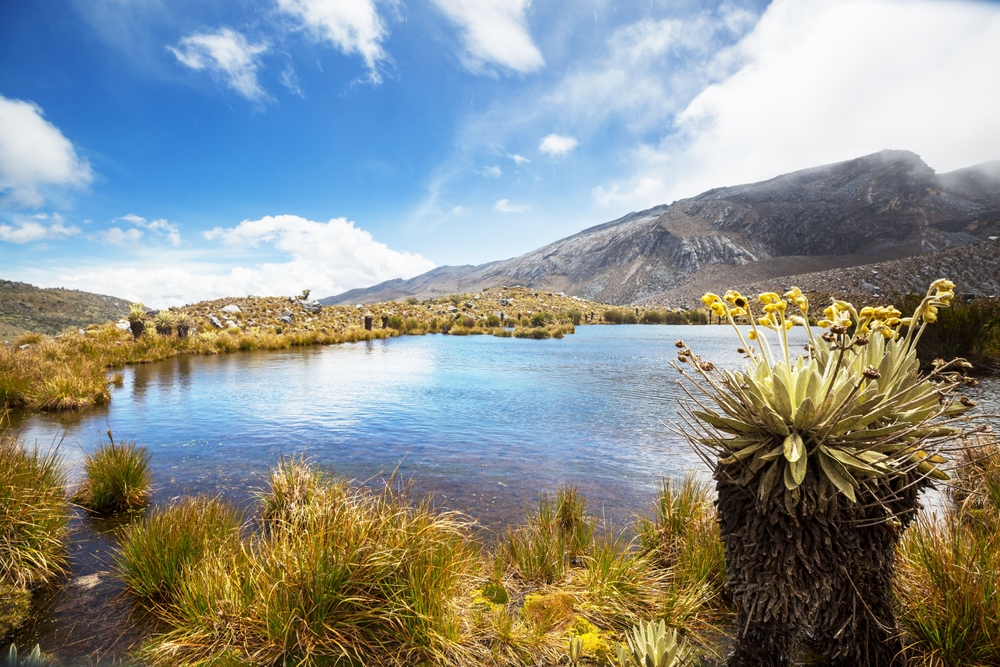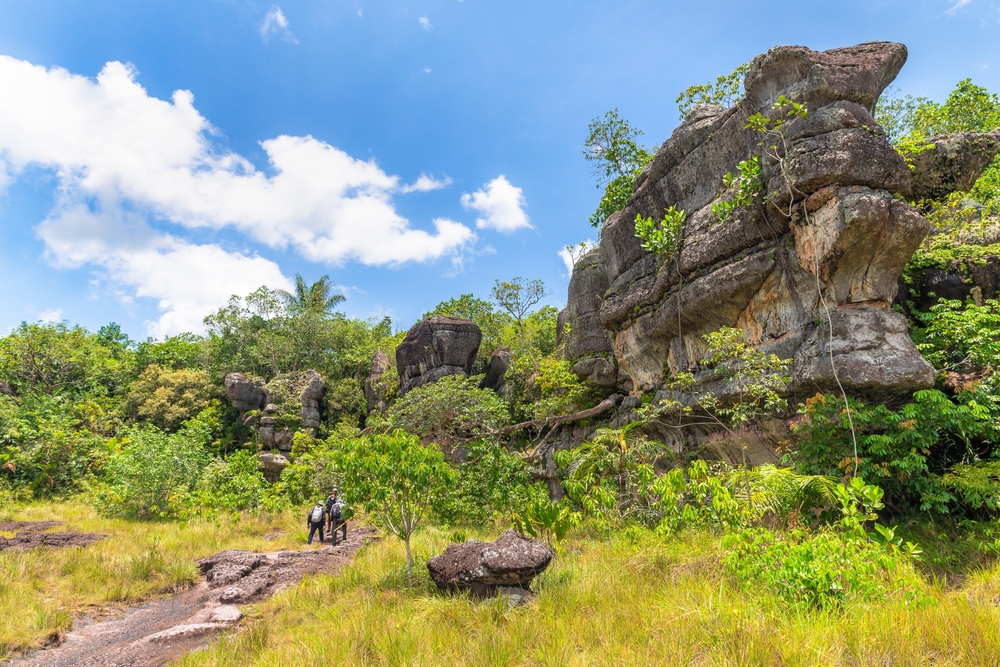Nevado del Huila Overview
Nevado del Huila National Park, known locally as Parque Nacional Natural Nevado del Huila, is located in the Andean region of Colombia, spanning the departments of Huila, Tolima, and Cauca.
Covering approximately 625 square miles (1,620 square kilometers), this protected area is home to Nevado del Huila, the highest volcano in Colombia, which rises to an elevation of about 17,598 feet (5,364 meters).
The park’s terrain is dominated by glaciated peaks, deep valleys, and páramo ecosystems, with rivers such as the Páez and Magdalena originating within its boundaries. The volcanic landscape provides a striking contrast to the lush cloud forests and high-altitude wetlands that characterize much of the park.
The vegetation varies significantly with elevation, ranging from dense Andean forests at lower altitudes to the páramo, a unique high-mountain ecosystem dominated by Espeletia plants, commonly known as frailejones.
These tall, woolly plants are well adapted to the cold, humid conditions and are essential to the region’s water regulation. The park’s forests contain an abundance of ferns, mosses, and orchids, creating a rich tapestry of plant life that thrives in the misty, moisture-laden atmosphere.
Wildlife in Nevado del Huila National Park is as diverse as its landscapes. The park is home to the endangered spectacled bear, South America’s only bear species, which roams the forests in search of fruits and bromeliads. Pumas and ocelots are among the elusive feline species that inhabit the dense vegetation, while Andean tapirs can be found foraging near water sources.
Birdwatchers will find the park particularly rewarding, with species such as the Andean condor, the masked trogon, and the yellow-eared parrot gracing the skies and treetops. The park’s rivers and wetlands also support amphibians like the brightly colored harlequin frog, a species highly sensitive to environmental changes.
A major highlight of Nevado del Huila National Park is its namesake volcano, an active stratovolcano that has had several eruptions in recent history. The dramatic glacial landscape and steaming vents offer a striking visual contrast to the surrounding forests.
The park is also culturally significant, as it lies within the ancestral lands of the Nasa Indigenous people, who maintain a strong spiritual connection to the region. Their traditions, ceremonies, and conservation efforts are deeply tied to the park’s ecosystems.
Visitors can experience Nevado del Huila National Park through trekking routes that traverse the rugged terrain, offering breathtaking views of glaciers, waterfalls, and pristine lakes.
While access to the volcano’s summit is restricted due to ongoing volcanic activity, the surrounding trails provide an opportunity to witness the region’s unique biodiversity. Birdwatching, nature photography, and ecological research are other popular ways to engage with the park’s landscapes. However, due to its remote location and challenging climate, visits require careful planning and guidance from local experts.
Conservation efforts within the park have been shaped by the challenges of balancing ecological protection with Indigenous land rights and ongoing volcanic activity. Deforestation, illegal hunting, and climate change pose significant threats to the fragile páramo ecosystem and its water sources.
However, collaboration between national park authorities and Indigenous communities has led to successful conservation initiatives, including habitat restoration and sustainable resource management. These efforts are critical in maintaining the ecological integrity of this unique high-mountain reserve.











































































